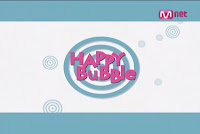|
|
| Everyday Beauty in the Garden |
But now, I’m living in an urban neighborhood with only minimal standards of lawn upkeep (weeds and messiness are fine, as long as it’s reasonably respectable and not raging out of control). So that enervating sense of keeping-up-with-the-Joneses is gone. Then, I have a number of friends who love, absolutely love working their plots in the local community garden. Plus, I’ve become increasingly invested in progressive food politics. And so, voila: Suddenly this summer, I found myself interested in gardening for literally the first time in my life.
I got on the waiting list for a space at a local community garden. Right around July 4th, one opened up – late in the season, yes, but not too late to get started. So with my husband’s help, I carted over much incredibly stinky compost (we have a composting bin in back of our house); some tomato, eggplant, zucchini, and pepper plants from Home Depot; and various organic seeds from Whole Paycheck. We dumped the compost and mixed it into the soil. I stuck the plants and seeds into the ground. From that point on, I was pretty clueless. What happens next?
|
|
| Garden Entrance |
Me being me, my little more than a month’s worth of experience at the community garden hasn’t simply been about the mechanics of planting, weeding, and watering. Oh no. Every time I go, I find myself slipping into reveries of metaphor and meaning, musing on the symbolism of composting, the politics of community, and the violence supporting the pastoral (more on that later).
The first revelation was the cucumbers. I had planted a few seeds, trying as best I could to follow the directions on the packet. Six, spaced several inches apart, about 1” deep into a mound of dirt. Fine. That didn’t seem so hard.
About two weeks later, I noticed a profusion of little two-leafed seedlings sprouting up – not only where I’d planted the seeds, but all over my little 10’ x 10’ plot. WTF? Were these really cucumbers, or something else? I went home and Googled it. And yes, these were definitely little baby cucumber plants. But I’d planted six, and gotten what looked like hundreds.
How could this be?
Suddenly, it dawned on me: the compost. I recalled reading somewhere, “never put seeds in your compost,” and wondering: Why? What difference would that make?
I remembered my 10-year-old’s stubborn resistance to eating the cucumbers in his salad throughout the preceding year. I remembered a cucumber that had ended up rotting in the refrigerator. And I remembered throwing all those uneaten cucumbers straight into the compost bin.
|
|
| Cucumbers! |
I was bemused, impressed, and amazed. I had simply thought of composting as being responsible with my garbage – something that I did along with hauling my recycling to the local park for collection (Chicago, shamefully, still not having a citywide pick-up program). But now, thanks to my green trash keeping, my little garden was bursting with fresh, green, resilient, and inspiringly simple beauty.
It was all so metaphorically rich. Cucumbers from the Compost! The Phoenix from the Ashes! The Resurrection and the Cross! Hades and Persephone! Death and Rebirth!
But it was also pretty funny, because really: WTF was I going to do with all those cucumbers??
Triage
Well, I may know next to nothing about gardening, but I’m not a total idiot. I realized that some of those cucumbers had to go. Or they’d take over everything, and then some.
So, feeling chagrined but determined, I pulled up lots of them. Figured I’d keep a good bit more than I’d planted – although one can eat only so many cucumbers, it seemed like it was meant to be.
|
|
| Random Magic |
But then – the ones I’d left got bigger. Again, being clueless, I hadn’t foreseen how big those little seedlings might get. A friend suggested that I transplant some to the area outside the garden fence that’s reserved for open picking. That seemed cool – sharing this unexpected abundance! So, I dutifully transplanted several. They didn’t like it too much – went through about a week of wilting – but then rallied and revived.
Still, my remaining cucumbers kept getting bigger. (Duh, right? But I didn’t know!) My savvy gardening friend then pointed out that it’s best to grow cucumbers on a trellis. OK, I thought. Learning by doing. I’ll get a trellis! They can climb up that, and I’ll have room for my other stuff. And I won’t have to kill any more of them!
Well . . . while I succeeded in installing a chicken wire trellis, the neighboring zucchini had gotten so big by that time that I couldn’t help bungling into it while setting it up. Some of the stalks broke, but I figured – hey, so what? Everything’s growing so beautifully, just stick it in the ground and it comes up! It’s be fine!
Oh, the wholesome joys of organic gardening! La la la . . .
But then, a few days later – my romantic bubble burst.
Trouble in Paradise
Bugs. Swarming BUGS. Horrible, grey, leggy, shelly things. Attacking my zucchini like the proverbial plague of locusts. And – much to my guilt and chagrin – they were clearly concentrating their attack on the parts of the zucchini that I’d damaged in my mission to install the cucumber trellis.
Ick, BIG Ick. But what to do? Going back to Google. I quickly identified the invaders as “squash bugs.” Then I started researching remedies. Any intervention had to be organic by the bylaws of the garden. Which was cool with me, but – what to do?
I read through one chat board that proposed a wacko range of homemade solutions. (Garlic and onions steeped in water and strained, hot peppers and coffee grounds, etc.) There seemed to be no consensus on what might work, other than “picking them off by hand and dropping them in a bucket of soapy water.”
Picking them off by hand?! BLECH! I didn’t want to do that. Plus, it’s not like this was in my backyard. I couldn’t hang out in the community garden all day, picking bugs off zucchini.
Happily, I found a solution. A spray bottle filled with organic dish soap diluted in water! Could it really be that simple?

|
| Killer (Biodegradable!) Soap Spray |
But – it did work. I started spraying those buggers, and they starting keeling over, dead. WOW. I was thrilled.
And suddenly, my whole metaphorical frame of reference shifted. I had been in the Garden of Eden – everything effortlessly blossoming, verdant, beautiful, abundant, lovely! Now, I was immersed in the Darwinian struggle for survival. The Hobbesian war of all against all – “poor, nasty, brutish, and short”!
I had assumed that organic gardening was so wholesome – peaceful, pristine – full of love and light and harmony and Ahimsa. But now, here I was, up close and personal, going mano a mano against an army of squash bugs, a determined killing machine.
I am going to KILL you squash bug mofos (squirt squirt squirt) – DIE, MFs, DIE!
Really, it would have felt a lot cleaner if I had just sprayed them with pesticide from afar. But there I was, with the squirt bottle, right up in their faces. By the time I was finished, I knew what those bugs looked like in every stage of their lives, from egg to nymph to adolescent to full-grown to ginormous swaggering big ‘uns. And I was determined to nuke them all.
The Particular and the Universal
My attack was successful. After a few minor reengagements and skirmishes, all that was left of the squash bugs were some remaining carcasses being carried off by ants.
I thought about the Jains, a religious sect that includes a tradition that’s so committed to Ahimsa, or nonviolence, that the only food that’s eaten is fruit that’s fallen from the trees – no picking. The highly observant put a mask over their nose and mouth to prevent killing gnats by accidently breathing them in. They carefully sweep the path in front of them before each step in order to avoid inadvertently squishing an ant or a spider.
This always struck me as astonishing – and fascinating. It’s a commitment to realizing a level of ethical purity that’s so uncompromising, it seems that living itself is a violation.
Certainly, nothing could be philosophically further from the vulgarized embrace of Darwinism that pervades so much of American popular culture – celebrating the survival of the fittest, ruthlessly consigning the weak to their fate.
|
|
| Firepit at the Garden |
This is a little snapshot of how it’s done. Human beings have been working to extract sustenance from the earth for endless generations.
And to some extent, it’s true. Bracketing for a moment the grandiosity of elevating my little garden plot to grand philosophical proportions, there remains some mysterious, elemental connection to nature in seeing the compost producing life, which will then inevitably decay, become earth, and regenerate life again.
At the same time, I’m drawn like a magnet to capturing my experience in metaphors. And the meaning I make of my experience plants me squarely into my own culture: Eden, Darwin, Hobbes.
Which is fine. But I’m well aware that there’s also other, radically different ways of interpreting what appear to be the elemental truths of the natural world.
This makes contemporary life extremely difficult – we all seem to have a primordial desire to be members of a like-minded tribe. We’re easily threatened by alternative ways of interpreting the world, sometimes for no reason – and sometimes for vey very good ones. After all, we do have ideological enemies who’d love to squash us like so many bugs.
It all comes down to the same familiar riff. The universally true and the culturally particular are always entwined. They’re not the same, but can’t be separated. We tap into our life force with one. We satisfy our need to make sense of it with the other.
In the beginning, there was Eden. In the beginning, the cosmic egg separated into yin and yang. In the beginning, a ball of dense matter exploded and the universe was formed.
I’m enjoying my little garden. Now, I have a reason to spend time outside, watch life grow, look carefully at what’s happening, and be under the open sky.









